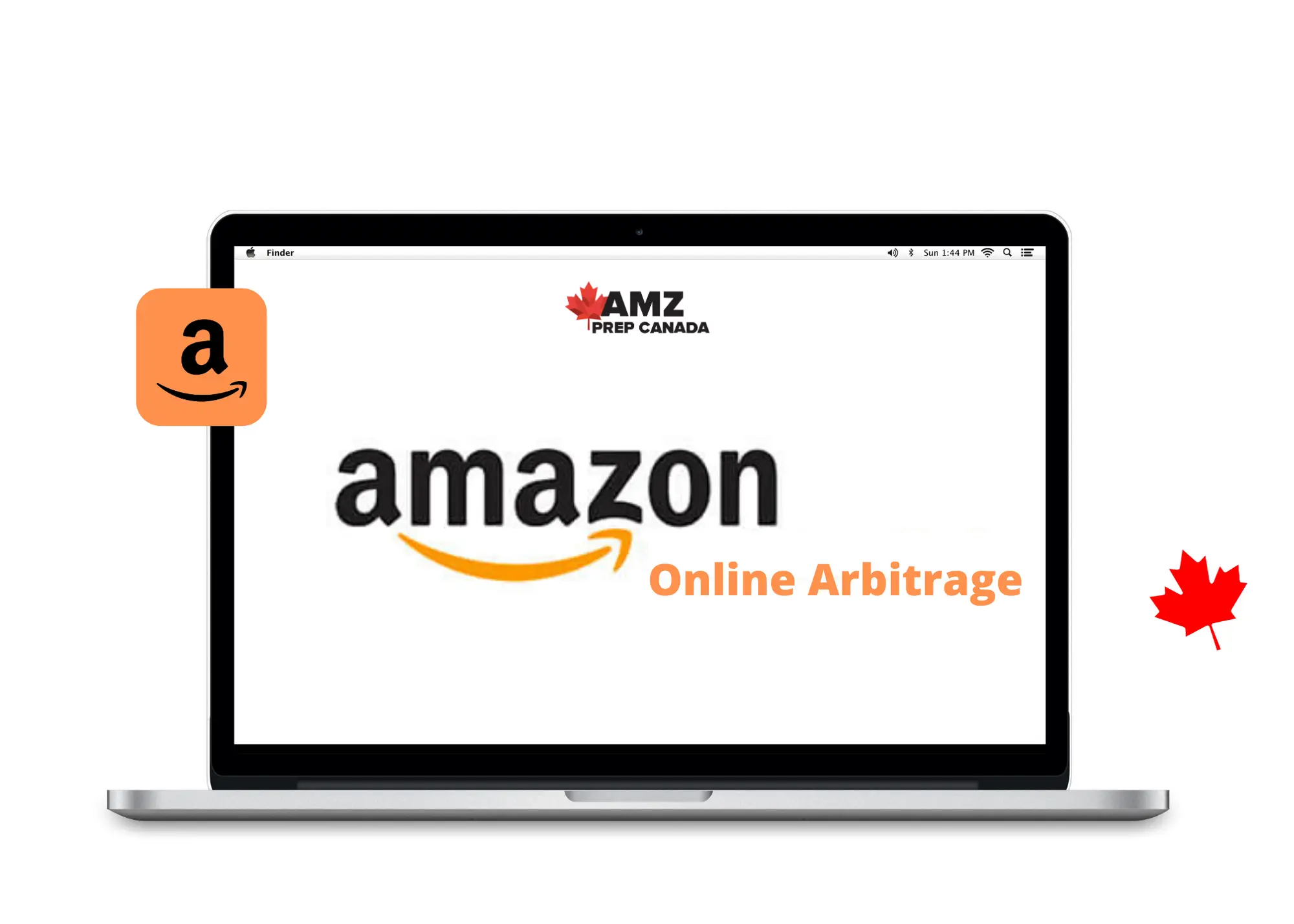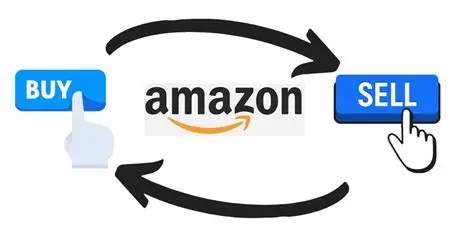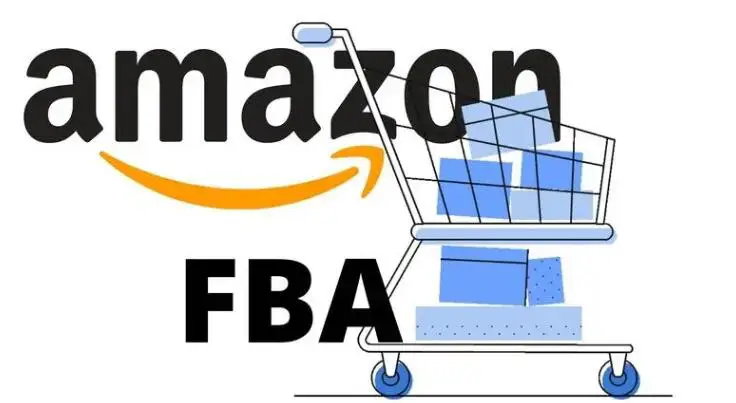Tired of the 9-to-5 grind? Craving a side hustle that can generate quick cash flow and lay the foundation for a future business? Amazon Online Arbitrage might be the perfect solution for you. Imagine finding a forgotten clearance gem at a local discount store or an online retailer, scanning it with your phone, and turning it into a successful business on the world’s largest e-commerce platform. This isn’t a fantasy; it’s a reality being practiced by thousands of Amazon sellers today.
Amazon boasts over 310 million customers worldwide, with 60% of all products sold on Amazon.com coming from third-party sellers—people just like you and me. This signifies a massive opportunity with a low barrier to entry, low enough that it can start with just a smartphone and a desire to succeed. In this article, we’ll demystify the world of Amazon online arbitrage, guiding you step-by-step through the entire process, from finding a product to finalizing a profit, helping you kickstart your online earning journey.

What is Online Arbitrage? - The Core Logic of Buy Low, Sell High
The core concept of online arbitrage is surprisingly simple: exploit price differences between markets to “buy low and sell high” for a profit. In the context of Amazon, this means you find products being sold for less on other platforms (like Walmart, Target, Costco, or even manufacturer websites), purchase them, ship them to an Amazon fulfillment center, and then let Amazon handle the rest—warehousing, packing, shipping, and customer service. As the seller, you simply focus on finding profitable products and managing your margins.
This is one of the fastest and easiest ways to start making money on Amazon. Compared to the wholesale model, which requires significant capital investment, or the private label model, which demands a long brand-building process, arbitrage allows you to avoid holding large amounts of inventory. You can start testing with just one or two items, reducing your initial financial risk. It serves as the perfect “springboard” to earn money without heavy investment and gain deep insights into the Amazon ecosystem before scaling.
Kickstarting Your Arbitrage Business: A 3-Step Strategy
The beginning is always the hardest part, but the first step in online arbitrage is surprisingly simple. You only need to prepare for three things:
Register a Professional Seller Account: This is your “ticket” to selling on Amazon. Unlike an individual seller account, the professional plan requires a monthly fee (currently $39.99/month), but it unlocks powerful FBA features and doesn’t charge the $0.99-per-item commission fee. You can easily sign up through Amazon’s official guide. Be sure to use authentic personal and business information (even if you’re a sole proprietor) to avoid future account risks.
Download the “Amazon Seller” App: This is your “arbitrage super-tool.” Whether you’re doing retail arbitrage in physical stores or online arbitrage from your computer, this app is crucial. Its powerful built-in features include:
- Barcode Scanning: Scan any product’s barcode to instantly view its selling price, estimated monthly sales, and number of reviews on Amazon.
- Product Status Check: Determine if the product is “** gated**.” If a product is gated, you need permission from the brand to sell it on Amazon. Before you buy, always confirm the product is “ungated” or that you have successfully applied for and received approval.
- FBA Fee Estimator: The app will clearly list all the fees required to send the product to an Amazon fulfillment center, including shipping, storage, and order handling fees.
Prepare a Solid Research Toolkit (Optional but Highly Recommended): While you can get started as a beginner with just the Seller App, when you want to filter for products with stable monthly sales and reliable profit margins, tools like Helium 10 become incredibly valuable. They offer more detailed sales history, keyword ranking, and competitive analysis data than the app, making your product selection more scientific and avoiding potential losses from “gut feeling” purchases. There are many channels online to find discounted subscription codes for these tools; investing in a good one will significantly boost your efficiency.
Learning from a Real-World Example: A Successful Online Arbitrage Operation
More than theory, a real-life example speaks volumes. Let’s walk through an arbitrage opportunity discovered at Costco:
- Discovery and Scanning: I spotted a flashlight at Costco and immediately scanned its barcode with a seller app. The app revealed that this flashlight was selling for $39.95 on Amazon with over 100 units sold monthly and classified as a non-restricted product. The price at Costco was significantly lower.
- Profit Calculation: This is the most crucial step. You need to calculate a clear profit formula:
Estimated Profit = (Estimated Selling Price) - (Product Acquisition Cost) - (Estimated FBA Fees) - (Shipping Costs)After calculating, I found that even with shipping costs factored in, each flashlight still had a stable profit of approximately $5. This proved it was a worthwhile business opportunity. - Purchase and Preparation: I decisively bought 4 units. At home, I prepared suitable boxes (it’s good practice to reuse Amazon’s used packaging boxes), ensured the products were undamaged, and prepared the Amazon shipping labels.
- Creating an FBA Shipment in Amazon Seller Central:
- Logged into the seller center, navigated to “Manage Inventory,” and clicked “Add New Product.”
- Searched for or scanned the barcode of the product I wanted to list.
- Created a new SKU (Stock Keeping Unit), entered the correct quantity and my selling price.
- Under “Fulfillment Channel,” I made sure to select “Amazon will ship this item and provide customer service” (FBA).
- The system automatically calculated the final FBA fees. After confirming all information was correct, I clicked “Inventory will be fulfilled by FBA and shipped to Amazon.”
- Labeling and Shipping: I attached the generated FBA label clearly to the outside of the package, then shipped it to the designated Amazon fulfillment center via UPS or an FBA-authorized carrier. The entire process, from taking photos and scanning to calculating profits and making the purchase, likely only took 20-30 minutes.
So what were the results? All 4 flashlights sold out within a few days, bringing in a total net profit of approximately $40. While this amount isn’t significant, it proves the entire process is viable and requires minimal time investment. If you can replicate this process 10 times, 100 times, or find products with higher profit margins, the income potential becomes enormous.

Online Arbitrage: The Gold Rush from Your Couch
Retail arbitrage (scanning physical stores) can be fun, but online arbitrage is often preferred by advanced sellers for its convenience and scalability. You can sit at your computer, browse the promotional pages of major e-commerce websites, and discover opportunities just as easily.
Good sources for online arbitrage include:
- Target.com: Regularly check the “Top Deals” section.
- Walmart.com: Search for “Clearance” items.
- Big Lots: Consistently offers deep discounts and is a treasure trove for sourcing.
- Kohl’s, TJ Maxx, etc.: Often have flash sales or exclusive discounts.
The core process remains unchanged. Find a discounted item on a target website -> verify the Amazon selling price and sales volume using the Seller App or a Helium 10 extension -> carefully calculate the profit -> place the order on the website -> have the product shipped directly to an Amazon FBA warehouse (some sites support direct-to-FBA shipping, saving you the trouble and cost of a second shipment).
Another excellent online arbitrage example: a 15-piece jigsaw puzzle at Big Lots selling for around $100, while its 90-day median price on Amazon was over $250. Even with an FBA fee of about $30, the profit margin per item was still very healthy. This example perfectly illustrates how online arbitrage allows you to “strike gold” by finding discounted products on a global scale, with profit margins far exceeding those of physical store finds.
The Two Pillars: Winning the “Buy Box” and Maintaining Seller Health
Once you have products for sale, two dynamic factors must be monitored constantly, as they directly determine the sustainability of your profits.
1. Winning the Buy Box
The “Buy Box” is what all Amazon sellers fight for. Statistics show that over 90% of orders come from products that customers purchase through the Buy Box. If you don’t win it, your listing is pushed to the very bottom of the page, and even with the lowest price, you’ll get almost no sales.
The secret to winning the Buy Box is simple: be the lowest price. When creating your listing, set your price just 1-2 cents lower than the current lowest-priced competitor. At that moment, you become the lowest seller and have a high chance of winning the Buy Box.
Of course, the competitor will react by lowering their price. This is when you need to assess the market’s capacity. If a product sells 1,000 units per month with only 2-3 sellers, there are enough orders for everyone to coexist peacefully. But if competition is fierce, you need to use pricing rules for automated management: set a “minimum price” (e.g., your break-even point) and a “maximum price” (the highest price you’re willing to sell for). When a new seller enters and prices below your maximum, the system will automatically lower your price to match theirs, but not below your minimum price. This ensures you win the Buy Box while locking in a profit floor.
2. Managing Your Seller Feedback
Besides price, the other major factor affecting your ability to win the Buy Box is your Seller Feedback score. This is a buyer’s rating of you as a seller, distinct from the product reviews themselves.
- Proactive Maintenance: Go to “Feedback Manager” in Seller Central and check regularly. If you see a buyer has mistakenly left a product review in the “Seller Feedback” section (e.g., complaining about the product itself, not your service), you must immediately click “Request Removal.” Since negative product reviews can’t be removed, getting a misplaced feedback removed will protect your score.
- Prompt Resolution: If you receive a legitimate negative seller feedback (e.g., claiming they didn’t receive the item or it was damaged), contact the buyer immediately via “Buyer Messages” to try to communicate and offer a solution (like a partial refund). As long as it’s not a malicious accusation, most negative feedback can be resolved properly.
A healthy Seller Feedback score is the lifeblood of your account. With good standing, you are more likely to win the Buy Box even at the same price and avoid sales restrictions from Amazon.

Scaling Your Business: The Key to Managing Multiple Accounts
As you grow your arbitrage business, you’ll naturally expand into multiple product lines, work with various suppliers, and even manage different brands. This evolution brings one of the most critical challenges: how to safely and scalably manage multiple Amazon seller accounts to avoid the risk of “Account Association”?
Account Association is a core rule within Amazon’s risk control system. It refers to the platform’s practice of analyzing digital fingerprints—such as IP addresses, browser configurations, and device information—to determine if two or more accounts are controlled by the same person or entity. Once an association is flagged, all related accounts could face suspension or bans, a devastating blow for a business dependent on Amazon sales.
Traditional methods to avoid this, such as using different VPNs, browsers, or computers, are not only cumbersome but also increasingly ineffective, as Amazon’s detection methods are continuously upgraded.
This is where a professional Anti-Detect Browser like FlashID becomes your indispensable “business firewall.” Its core value is its ability to create a completely independent, physically isolated digital identity for each Amazon seller account.
- Building a Zero-Association Account Matrix: You can easily build an account matrix. For example, Account A (selling outdoor gear) has FlashID Identity 1, and Account B (selling home goods) has FlashID Identity 2. When you operate account A in Chrome window 1, activities of account B in window 2 leave absolutely no cross-contamination traces. This level of isolation is the most effective way to fundamentally eliminate the risk of account association.
- Boosting Operational Efficiency and Security: As a multi-account operator, you need to log in to multiple supplier backends, monitor sales data across multiple stores, and manage multiple sets of inventory and orders. FlashID’s tab-syncing feature allows you to efficiently manage multiple independent account environments within a single browser, ensuring that login information and operational status for each account remain accurate and synchronized. This saves significant time and effort previously spent switching between devices or accounts, while guaranteeing top-tier security.
In short, online arbitrage is a typical business model that grows from a “single-point breakthrough” to a “matrix operation.” FlashID is the strategic tool that enables you to safely and efficiently upgrade from an individual “one-person-one-store” model to a professional “multi-account matrix” operational model. It removes the biggest obstacle to scaling your arbitrage business, allowing you to focus on product selection, profit, and operations rather than constantly worrying about account safety.
Frequently Asked Questions (FAQ)
Q: For a complete beginner with little startup capital, is it really possible to start online arbitrage with just one item? How much capital should I budget to get started?
A: Absolutely. One of the biggest advantages of online arbitrage is its low barrier to entry and small-batch capability. You can start with $100-$200 in capital, purchasing only 1-3 items for testing each time. The key is to find products with a high profit margin (e.g., over 50%). This way, even with a small capital base, you can generate a significant dollar profit. The initial goal is to “run the process and validate the model,” not to “get rich quick.”
Q: When pricing my item, should I refer to the “price” displayed on the Amazon product page or the “90-day median price”? Which data point is more reliable?
A: Referring to the “90-day median price” is more reliable. The “current price” can fluctuate dramatically due to promotions or stock-outs, or it could even be a listing error. The median price reflects the stable selling value of a product over a period of time, providing a more accurate reflection of its market value and your potential profit. Use it as the baseline for your pricing.
Q: Beyond price and sales volume, what are some “hidden” risks I should avoid when looking for products?
A: There are several key risk points to consider: Fragility or Perishability: Avoid buying fragile, leak-prone, or very high-value items, as returns and damage will severely erode profits. Infringement Risk: Do not buy products with clear trademarks or patents, even clearance items, as they can lead to your listing being taken down for intellectual property violations. Bulky or Heavy Items: This significantly increases FBA fees for storage and fulfillment, eating into your profits. Prioritize “small and beautiful” items.
Q: The article mentioned the need to monitor prices and feedback regularly. For a beginner who might only be selling a few items initially, how often is a reasonable frequency to check the Seller Central backend?
A: In the early stages, spending 10-15 minutes a day logging into Seller Central to check is completely necessary. You need to see if your items have sold, if there are any negative reviews, and if competitors have adjusted their prices. This process not only helps you learn quickly but also allows you to respond to market changes promptly. When you become more experienced and have more products, you can shift to using third-party software for automated monitoring, reducing manual work.
Q: If there are many competitors for my product on Amazon and we’re stuck in a fierce price war, should I join this battle? What are the survival strategies for a beginner?
A: I don’t recommend beginners engaging in a head-to-head price war in a “bloody market.” Your survival strategy should be to find blue-ocean products or compete through differentiation. Find niche products with stable demand that are not hot sellers: For example, a specific model of battery, a part for a niche tool. These products have less competition, and sellers are often not as sensitive. Focus on seasonal products: Find them a few months before the sales season begins to seize the first-mover advantage. Watch for “out-of-stock” products: Once a major seller runs out of stock, if you have the product on hand and can ship quickly, you can gain temporary pricing power and sell at a higher price.
Q: Should I prioritize online arbitrage or retail arbitrage to start my Amazon journey?
A: For beginners, I suggest starting with online arbitrage first. Here’s why: Convenience: It’s not limited by time or space; you can “treasure hunt” while drinking coffee. Data-Driven: It’s easier to systematically research and combine with tools like Helium 10 for a higher success rate. Scalability: Online inventory sources are easy to replicate and scale up. Retail arbitrage is better suited as a supplementary income source and a source of “treasure hunting” fun after you have some experience.
Q: How can I ensure that what I’m buying from third-party websites (like Walmart) is 100% authentic and avoid buying “counterfeits” that could lead to customer complaints?
A: This is an absolutely critical point. Please be sure to purchase through official channels or reputable large retailer websites. For major retailers like Target, Walmart, Costco, and Big Lots, the quality of their private-label or official channel products is guaranteed. Avoid purchasing from unknown third-party sellers or deep-discount websites, as the authenticity of their goods is difficult to verify and comes with high risk. Remember, your reputation is built on customer satisfaction, and customer satisfaction is founded on the product itself.
Q: Besides Helium 10, what other tools can help me efficiently find products for online arbitrage?
A: There are indeed several mainstream tools on the market, such as Jungle Scout and SellerApp, which offer similar product databases and market analysis features. However, Helium 10 is particularly popular with beginners due to its comprehensive features, abundant learning resources, and high cost-performance. I recommend you can watch some comparison reviews first or use its free trial version to get a feel for it before deciding whether to use it long-term.
Q: When my order volume and product variety increase, how can I avoid mistakes and improve efficiency when managing multiple supplier orders and Amazon FBA shipments?
A: This is when you need to introduce systematic and tool-based management. Use Spreadsheets: Create a tracking sheet for each supplier or product, recording purchase order numbers, items, costs, shipping status, and arrival dates. Leverage Seller Central’s order and shipment reports: Export and reconcile them regularly. Consider purchasing a barcode scanner: Printing FBA labels and scanning them upon inbound inventory can dramatically reduce the risk of wrong or missed shipments. Use RPA (Robotic Process Automation): For highly repetitive tasks like copying order information or printing labels, you can use RPA software to automate the process.
Q: As a multi-account arbitrage seller, how should I establish and manage multiple Amazon seller accounts for different suppliers and business lines to avoid the risk of account association?
A: This is the core issue that professional sellers must face. Absolutely do not log in to and operate multiple Amazon seller accounts from the same browser and IP address, as this easily leads to account association and penalties. Using a fingerprint browser like FlashID allows you to create a completely isolated, fingerprint-independent environment for each account, fundamentally avoiding risk and enabling efficient multi-account matrix management.
You May Also Like


